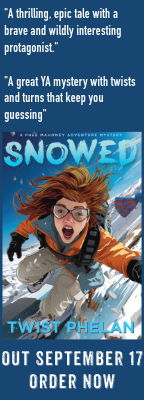by Christine Autrand Mitchell
FADE IN:
That’s how a screenplay begins, and it ends with FADE OUT. As a writer of screenplays, novels, short stories and non-fiction articles, I’m going to take you on a journey through a landscape of writing to point out familiar landmarks, for those strangers to screenwriting.
A screenplay is not like a short story or a novel, not like a piece of non-fiction–an article or a memoir. There are strict rules as to format, yet, there is flexibility in it. It does sound vaguely familiar, does it not? Unlike other types of writing, it is definitely more structured. However, there’s a simple rule to follow: a screenplay is for a visual medium and therefore what it contains is only what can be seen or heard. The story can be anything, however, and here the paths cross again.
I’m getting to know many screenwriters as I embark on the journey of being one of them. As it turns out, the process is much like any writer’s: lots of time alone in front of a computer screen, fingers typing out what is seen and heard inside the limitless world created in our brains, trying to concentrate on a conversation over dinner but the story is still spooling around and drowning everything else out. Screenwriters are trying to get their scripts produced just as a writer is trying to get published.
I recently attended the American Screenwriting Conference at the Sacramento International Film Festival, since two of my screenplays reached the finals there, and it was a great opportunity to meet up with other writers–commiserating over the writing process is what we all yearn for, it seems.
Richard Broadhurst, playwright, screenwriter, actor and friend, was on a panel with Dr. Lew Hunter (screenwriter, author, Professor Emeritus at UCLA’s Department of Film and Television), and their panel embarked on a discussion of the shortfalls of screenplays they read as part of teaching and coverage they provide. (Script coverage is a synopsis by the reader with a critique, sometimes with a score card, judging it “pass [no],” “maybe/consider” or “recommend/accept.”)
The shortfalls they regularly see are very much like in any type of writing: poor dialog and weak endings (Act III in script-speak). Character driven screenplays are the most successful, which for me rings true for all types of writing–yes, of course there are plot driven stories as well, but without good characters, who’d want to follow them? A good story arc is essential as well.
A decision has to be made along the way: is this a Hollywood or an Independent film? The answer to this question will guide you, as the screenwriter, as to where to market it: LA or more toward Producers/Filmmakers.
Once the goal is decided, and the screenplay is complete, the same steps follow as, say, those of a budding novelist. The search for representation follows: agent or manager. A production company might be submitted to or making the film yourself–I liken this to going straight to the publisher. Representation is not a necessary step, but it does carry a lot of weight when an agent contacts a producer as opposed to you, as a writer. Sound familiar?
If you want absolute control over the script you’ve born, my friend Richard Broadhurst has told me many times to be a playwright instead. In the theater, the writer has the control. In film, once the script is optioned (rights bought for a certain length of time), they may bring in another writer to “fix it” or alter it to something unrecognizable, but rarely does the beautiful creature you’ve created land recognizably on the screen.
Whatever you write, a thick skin is vital, for rejections are certainly easily found. Me? I’m in the middle of the search, pursuing both representation and my “independent” options! With one feature in the can (as a producer and not writer), I can attest one thing: it is possible to get a script to screen!
















0 Comments